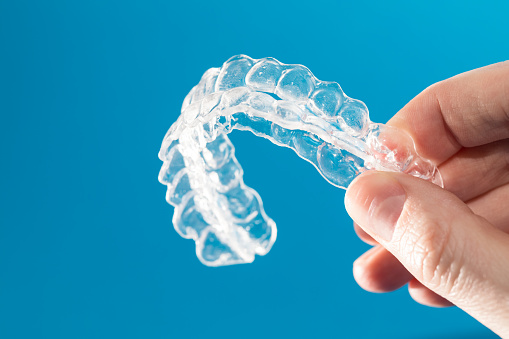Mill Creek, WA

While orthodontics may be a new science for you, it isn’t new to us. Orthodontics, as a practice, has a long history. The practice began in Ancient Egypt with pyramids and Pharaohs, and it is thousands of years old. If you’re not sure about orthodontics, and why it is so essential, let Sullivan Bastian Orthodontics tell you about the history or orthodontics.
When Did Orthodontics Start?
Historians know from years of looking at ancient skeletons that people have for centuries had crooked teeth. Skeletons from 50,000 years ago have been discovered with crooked teeth. Orthodontics got their start in Ancient Egypt when people began to try and use a form of braces to correct their tooth issues.
Researchers believe that the Egyptian practitioners were trying to repair teeth that were spaced poorly or that were not aligned well. Egyptians fixed tooth problems using metal bands that were tied to the teeth using catgut. The catgut ties moved the teeth, and so they acted like the metal wires we use with traditional metal braces today.
Other Early Orthodontics
The Egyptians were first to try and fix teeth through orthodontics, but there were others. Ancient Greeks, Romans, and Etruscans also tried to correct tooth placement and improper bites. The Etruscans were quite upscale in their orthodontics. They used bands of gold to correct the teeth of wealthy women in the culture. Rather than being temporary, the golden bands were left in place once the teeth were fixed, and were buried with the women when they died.
Greek scholars began writing about fixing tooth issues in 400 BC, and Roman scholars such as Pliny the Elder and Celsus wrote about dental practices to fix teeth 2000 years ago.
The Colonial Period
People really began to study orthodontics and how best to treat teeth in the 17th century. During the colonial period, practitioners used wax impressions of teeth to make aids for the teeth from the wax models in the 1600s. The father of dentistry, Pierre Fauchard, straightened teeth with metal bands.
Fauchard wanted the teeth to move quickly, so he tied teeth to their surrounding teeth to keep them and the metal bands in place. Other dentists developed wedges or used threads to keep teeth adequately spaced apart.
The 19th and 20th Centuries
Researchers say that the modern orthodontic period began in the 19th century when people wrote books about using orthodontics to fix tooth problems. Practitioners found how to rotate crooked teeth into place properly. Gold caps were also placed on molars to correct bite issues.
These practitioners also used rubber to fix bite issues and tooth spacing. The father of modern orthodontics, Edward Angle, researched bite problems and how to correct them. He developed practices for correcting bites. He told dentists to put brackets and wires on the teeth to get them to move, which you might recognize as the forerunner of the modern braces system.
The creation of dental cement allowed braces to be cemented to the front of teeth instead of wrapping a wire around the teeth to hold the brackets in place. Lingual braces, which allowed braces to move to the rear of the teeth instead of the front of the teeth, allowed adults to wear braces that were more difficult to spot.
Modern Orthodontics
Since orthodontics has been established as a legitimate field of dentistry, technology advances in the past 20 years have allowed orthodontic appliances to be much more comfortable and efficient than when they originated. 3D imaging and digital x-rays have developed, allowing orthodontists to more accurately observe teeth, and even predict how a patient’s mouth will develop. Immediate access to this information visually has allowed orthodontic treatment to progress faster for patients, making the process of getting treatment much easier.
Even more popularized today is the 360-degree x-ray, which allows for a more comprehensive picture of a patient’s mouth while simultaneously minimizing radiation. This 360 degree picture is a huge advancement for orthodontists, whose practice relies heavily on accuracy. The development of the iTero scanner allows orthodontists to make impressions for braces and other orthodontic appliances digitally – as opposed to manually.
Digital impressions are much more accurate than manual ones, resulting in fewer issues with braces fit and less modification of orthodontic treatments as they progress. The development of CAD/CAM technology – a robotic wire bending technology – has made it easier for orthodontists to precisely place braces, even when considering lingual braces on the backs of the teeth.
Types of Orthodontics Available Today
Most people may not know it, but there are quite a few different styles of braces available today. They all have unique qualities which make them beneficial to unique situations. Which one is the best for a given patient will depend upon their situation and needs.
While traditional braces use brackets, which are glued to the surface of the teeth and wires which help to apply pressure to them, they are always needing readjustment to make sure the pressure remains steady and the teeth will continue to move to their appropriate places.
Some braces are made out of ceramic. These appear clear making them less noticeable than the traditional metal braces. Another option is called lingual braces. While they too employ the same technique as traditional braces, the brackets and wire are on the lingual side of teeth which is next to the tongue.
The last type uses clear alignment trays to gently put pressure on the teeth to shift them. The trays are changed out every few weeks and generally are more expensive. These are beneficial in that patients can remove them to eat or to properly clean and floss their teeth. There are no dietary considerations with clear aligners either unlike traditional braces.
Contact Us Today!
There are always dental advances being made for you and your teeth, so you should give Sullivan Bastian Orthodontics a call today. We are here to meet all of your orthodontic needs.

